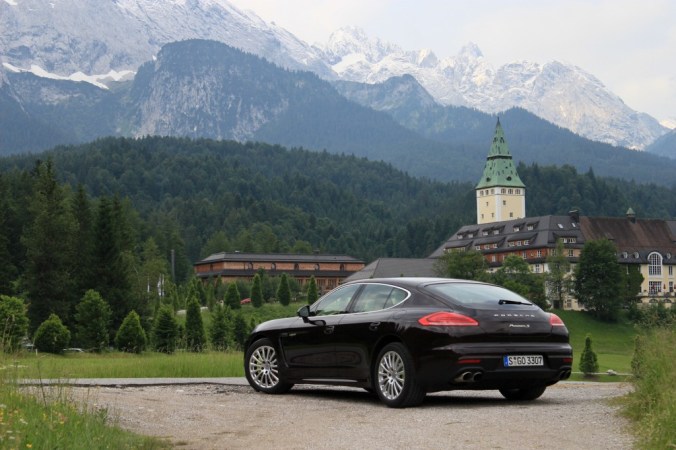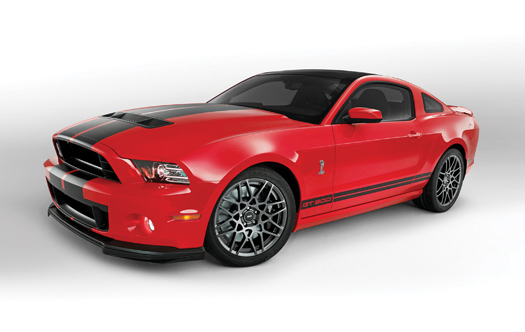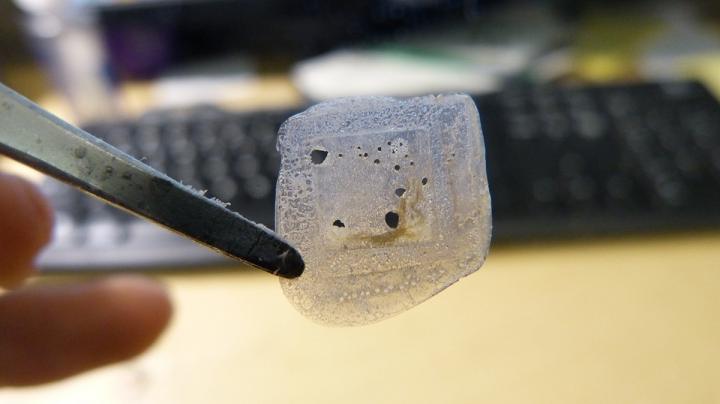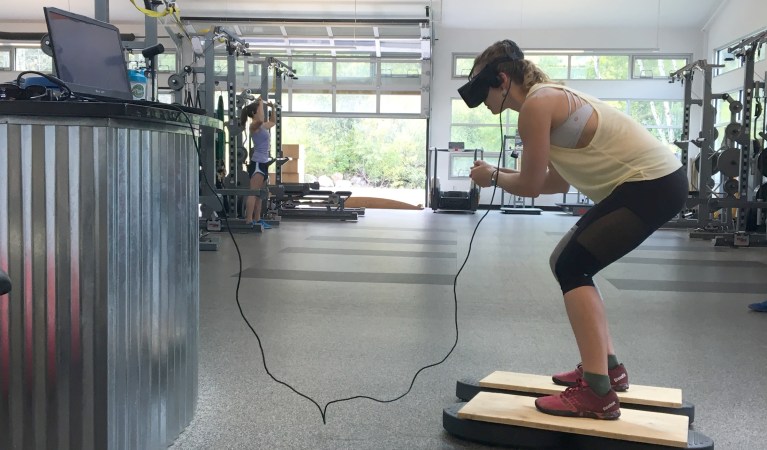

The Ford Mustang Mach-E, Ford’s new battery-electric crossover SUV, is in no way, shape, or form a Mustang in the tradition of the pony car’s heritage as a sporty coupe with a cramped back seat and accessible combustion-based performance.
But that doesn’t matter. That’s because it didn’t matter to any of the people who flocked for a closer look at our test car. They all called the Mach-E a “Mustang,” and they did not do so ironically.
The second reason why it doesn’t matter: the “real” Mustang belongs to a breed of transportation that is going extinct. If anything called “Mustang” is to succeed as long into the future as the car’s history stretches into the past, it will be more like the Mach-E and less like any of the Mustangs that got us here. Adapt or die.
Ford has known this from the beginning. The company built shortened two-seat Mustangs, stretched four-door Mustangs, and station wagon Mustangs as prototypes that never reached production. A 1968 Mustang hatchback concept car forecast the second- and third-generation Mustangs built between 1974 and 1993 that were available as hatchbacks, because that is what customers at the time wanted.
For Mustang, the only constant is change. Today, drivers want tall wagons that we call “crossover SUVs.” But what of the 2021 Mustang Mach-E crossover? What is it like to drive and to live with daily?
The Mustang Mach-E’s performance and range
Let’s unpack what Mustang Mach-E delivers. The base model starts at $42,895, and our test car lists for $56,400. The base car’s battery pack holds 68 kilowatt-hours of energy, and our test car has the upgraded 88 kWh battery. For comparison, a Tesla Model Y compact crossover has a 75 kWh battery pack.
Driving range has been a source of concern for people potentially interested in EVs. The Mustang’s large battery and improved driving efficiency provide a maximum range of 270 miles in our all-wheel drive test car and the smaller standard pack is good for 210 miles with AWD. Both batteries propel the car another 30 miles in the rear-wheel drive versions.
The matrix of batteries and drivetrains also affects performance. This is a Mustang, after all, so that is important to the people who appreciate that heritage. Our high-end test car boasts 346 horsepower and 428 lb.-ft. of torque thanks to its big battery and electric motors at both the front and back of the car. At the other end of the spectrum, the base model with the small battery and rear-wheel drive is rated at 266 hp and 317 lb.-ft. Speed freaks should know that there is a GT model in the works with a predicted 459 horsepower.

The innovative volume knob on the Mach-E
The available color palette for the Mach-E is disappointingly monochromatic, with every shade of silver and gray spanning the gap between Star White Metallic and Shadow Black. There’s even a blue that is so dark it looks black. Among colors with actual pigmentation, there are only two for the Mach-E, and brilliant Grabber Blue only comes on the limited-production First Edition Mach-E. That leaves the somewhat ostentatious Rapid Red Metallic as the sole option for drivers who want a little color in their lives.
It is even worse inside, where the only choices are black and gray. Bring back interior colors in vehicles whose stated mission is to provide some excitement!
Today, the Mach-E wears a few Mustang styling cues, pasted on. Notice the taillights with the three vertical bars and the running horse logos. Those don’t matter. What does matter is the philosophy that the Mach-E will be distinctive, not generic. And that it will be exciting, not dull.

We’ve seen other sporty crossover EVs from Jaguar and Tesla, but the one area where the Mach-E truly breaks new ground is in the volume knob for its infotainment. Designers detest knobs and buttons cluttering their sleek dashboards. Programmers detest dumb hardware that can’t be repurposed. This is why some carmakers have tried to nudge drivers toward various swipe-to-change capacitive touch volume controls, only to learn from hard experience that drivers detest those. Honda had to backpedal and put volume knobs back into their cars.
The Mach-E’s volume control imaginatively bridges the divide. Drivers have a physical plastic knob that they can spin without taking their eyes off the road because the knob is right there at the bottom of the infotainment screen.
It is literally on the infotainment screen, which is the clue that this is no ordinary volume knob. Instead, it is just a simple piece of plastic with a rotating knob that is glued to the Mach-E’s 15.5-inch center stack display. The volume control is done through the infotainment system’s touch screen interface, with the knob acting as a virtual finger turning circles on the screen to raise and lower volume.
This provides drivers with the physical knob they can easily reach and operate without distraction. And it gives programmers a virtual device whose function can be adjusted with over-the-air software updates over the life of the vehicle.
Other systems with similar virtual control lag in response to changes, which drivers also detest. Ford’s programmers ensured that the software would be quick to respond to audio system input, according to Ford SYNC software supervisor Husein Dakroub.
Inspiration to combine the plastic knob with the touchscreen came from a Keurig cup on a conference room table during a meeting to discuss how to handle volume input, he said. A team member put the cup onto the display screen lying on the table and a concept was born. Ford has since patented the idea.
The Mach-E’s quirks and bugs
As we have seen with most of these dauntingly complex integrated infotainment systems with enough lines of programming code to fly spacecraft, bugs appear.
The Mach-E issue I experienced was a persistent preference for SiriusXM channel 2. Here’s what happens: Drive the car listening to the channel of your choice. Park at your destination and shut the car off. Return to the car and restart it, and the radio is now magically on channel 2, tormenting you with the lamest, er, greatest popular hits of our day. Fingers crossed that one of those over-the-air updates exterminates this bug without introducing something worse.
Another area where Ford sought to innovate was with the Mach-E’s door handles. The electric retracting door handles that Tesla uses are expensive and trouble-prone, so Ford wanted something simpler that was also unique and that wouldn’t stick out in the wind, causing aerodynamic drag and wind noise.
The solution is a push button at the bottom of the window above a small protruding ledge put there to give you something to pull the door open. Kudos to Ford for trying something new, but in practice the system feels awkward. It seems laid out to be used by the right hand.
But, as the driver stands to the right of the door so it can swing open, normally this is done with the left hand, and the little ledge seems harder to grasp left-handed. Maybe the design can evolve with left-hand-friendly geometric adjustments to improve it in the future, but as is, it frustrates and irritates with every opening of the driver’s door.
Sliding into the car and behind the wheel, the windshield frames a forward view that is reminiscent of that in Porsche’s SUVs, with a similarly curvaceous hood stretching out in front. There’s a compact 10.2-inch digital instrument cluster directly ahead of the driver providing key information such as vehicle speed to the driver.

The Mustang’s high-tech nature makes it a good candidate to have been the first vehicle to replace that instrument panel entirely with a head-up display, which would put the relevant information even more directly into the driver’s line of sight. Alas, we wait.
There’s another electronic box atop the steering column too. It is a camera, looking at the driver. The Mustang Mach-E does not currently have an ability to steer itself, but that is a feature that will be added in the future, according to Ford. When it arrives via an over-the-air update, the Mach-E will be able to watch its driver to ensure that they are paying attention.
Cold weather driving in the Mustang Mach-E
Testing the Mach-E this winter gave us the chance to see this electric horse in its least-suited situation. Cold weather increases electric energy consumption, as the car runs the cabin heat, defrosters, seat heaters, and lights. It also reduces the energy capacity of the battery, shortening driving range as if your combustion-engine car’s gas tank got smaller in the winter.
And the cold also prolongs charging time, as if the hose at the gas station turned into a straw when you refill your gas car in the winter. In brief: In the cold, the vehicle needs more energy, has a smaller battery capacity, and recharging takes longer. So, it was good to put the Mustang to the test in this worst-case scenario.
At 32 degrees F—hardly a polar vortex—we saw the estimated driving range shrink from 270 miles to 208 miles. With that in mind, we stopped for a quick pit stop at a 150 kW Electrify America charger to boost the battery before heading out for a drive.
During the ten minutes it was plugged in, the Mach-E only added a paltry 5 kWh. While that would be speedy for a traditional 240-volt AC Level 2 charger, it was disappointing for the DC fast charger.
An Audi E-Tron, along for the drive and plugged in alongside, got 13 kWh in 13 minutes, so it was charging twice as fast as the Mustang in the freezing weather. A charge on a warmer day showed speedier results, but it is important to be aware when planning winter drives that range is significantly shorter and recharging time is much slower.
Testing the Mach-E’s all-wheel drive system in a few inches of snow revealed it, unsurprisingly, to be the best Mustang ever for snow driving. Ford engineers tuned the AWD system to give the Mach-E a lively rear-drive feeling, and it shows both in good weather and bad. Through the snow and slush, the Mustang was stable, but the rear-wheel bias showed in periodic tail-wags.
This isn’t surprising under acceleration, but while driving in one-pedal mode with heavy regeneration when the driver lifts off the accelerator pedal, the Mach-E regenerates aggressively enough to break traction at the rear and fishtail from deceleration rather than acceleration. It was significant enough for the stability control system to automatically intervene.
The good news is that the stability control system is there to do its job, but it leaves us wondering why the Mach-E would destabilize itself in the first place. The Selectable Drive Mode settings for the car have three choices: Engage, Whisper, and Unbridled.
Ford labels “Engage” as the normal drive mode, while “Whisper” is the quiet mode where the car produces less of the artificial “engine noise” that tells the driver what’s happening with the drivetrain. The sound effect is reminiscent of the result of Captain Kirk calling down to the U.S.S. Enterprise’s engine room and demanding all the power they’ve got. Switch to “Whisper” mode, and the Mach-E hushes its Hollywood effects.
It also reduces the regeneration, so it turns out that Whisper is better for snow driving than Engage is. It seems like an all-wheel drive machine could probably also use a “Winter” mode that optimizes the system for stability in slippery conditions.
The Audi e-Tron felt much more sure-footed while making the same drive. This is a choice by the two companies’ engineers, but when there are modes offered for driver selection, a Winter mode seems like an obvious choice.
The third mode that is available in the Mach-E is Unbridled. This gives the car a quicker response to the accelerator pedal, it turns up the volume on the Enterprise-at-warp effect, and it turns the instrument panel orange as a reminder of the serious business at hand.
Cars with electronically adjustable shock absorbers can also change the ride and handling characteristics in different drive modes. The Mach-E has no such shocks now, and the default setting is biased, like the all-wheel-drive, to sporty driving. That means that the ride is stiff and more punishing than maybe a lot of crossover SUV buyers might anticipate.
As Porsche did with its early SUVs, Ford obviously felt the need to establish sporty credibility here. And as with Porsche first attempts, the ride quality suffers. Eventually Ford will probably not feel the need to prove the Mach-E’s Mustang bona fides with every model and trim level, and maybe the car will gain some electronically adjustable shocks to provide the best of both worlds. For now, the ride is stiff for a crossover. But it is pretty typical for a Mustang.























